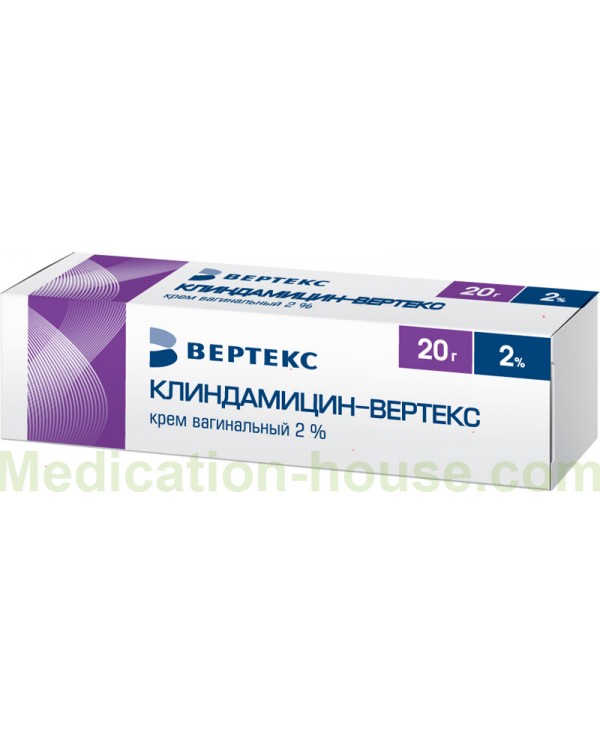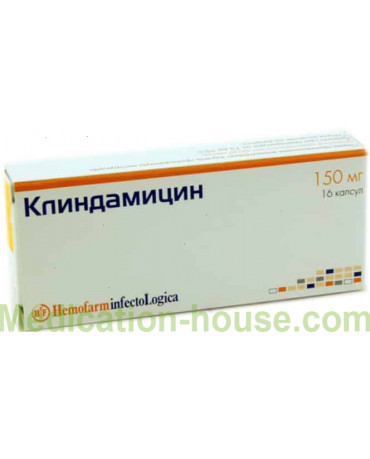Instruction for Clindamycin cream
You can buy Clindamycin cream here
Clindamycin cream is a broad-spectrum antibiotic produced in various dosage forms for the treatment of infectious diseases. It is widely used in pediatrics.
Pharmachologic effect
Clindamycin cream is a lincosamide antibiotic.
The active substance has a bacteriostatic effect when used in therapeutic doses, and in high doses it has a bactericidal effect on strains sensitive to Clindamycin cream. Clindamycin is widely used, including in pediatrics, for various diseases of the respiratory tract, soft tissues, joints and bones caused by:
Propionibacterium;
Eubacterium;
Corynebacterium diphtheriae;
Peptococcus;
Clostrtidium tetani;
Clostrtidium perfringens;
Veillonella;
Staphylococcus spp .;
Fusobacterium spp. (with the exception of F.varium, which is resistant);
Streptococcus spp .;
Bacteroides spp;
Bacillus anthracis;
Peptostreptococcus spp ..
According to the instructions for Clindamycin, most gram-negative aerobic bacteria, resistant strains of Staphylococcus aureus, Neisseria gonorrhoeae, Haemophilus influenzae and Neisseria meningitidis, as well as viruses and fungi (including yeast) are resistant.
Release form
Clindamycin is available as:
Gelatin capsules with a violet body, containing a white powder of 0.075 g (for children), 0.3 g and 0.15 g of clindamycin hydrochloride. 8 pieces in a blister;
2% Clindamycin vaginal cream, in tubes of 40 g with 7 single applicators;
Homogeneous white gel Clindamycin for external use, in aluminum tubes of 15 g.
Indications for use
According to the instructions, Clindamycin cream is used for:
Peritonitis;
Osteomyelitis;
Empyema of the pleura;
Endometritis;
Adnexitis;
Purulent infections of the skin and soft tissues;
Lung abscess;
Pneumonia;
Purulent wounds.
Also, Clindamycin is used as part of combination therapy for the prevention of peritonitis and intra-abdominal abscesses.
Clindamycin gel is used externally to treat acne.
Contraindications
According to the instructions, Clindamycin is contraindicated in:
Hypersensitivity to lincomycin or clindamycin;
Severe violations of liver or kidney function;
Myasthenia gravis;
Bronchial asthma;
Ulcerative colitis.
Clindamycin cream is not prescribed under the age of one month and for the elderly, it is prescribed with caution in case of a history of gastrointestinal tract diseases.
Clindamycin cream is contraindicated for use during pregnancy and lactation for oral and parenteral administration.
Intravaginal use of Clindamycin is possible only for strict indications.
Instructions for the use of Clindamycin cream and doses
The dose of Clindamycin and the choice of its dosage form depend on the disease, the course of the disease and age.
For severe infections and diseases of the abdominal cavity, Clindamycin is administered by injection according to the instructions. In mild forms, 1.2-1.8 g are usually administered per day, and in severe forms - 2.4-2.7 g, divided into 2-4 doses. Do not administer more than 600 mg of Clindamycin at a time.
Intravenously, Clindamycin is used for inflammation of the appendages of the uterus and peritoneum, which is localized in the pelvic region, every 8 hours for 0.9 g. Clindamycin is administered intravenously for at least four days, and then at least two days after the onset of improvement.
For the treatment of cervical infections that cause chlamydia, Clindamycin tablets are used 4 times a day, 450 mg for 10-14 days.
In pediatrics, Clindamycin is most often used in the form of a syrup, for which 60 ml of water is added to the bottle with granules. The dose of the drug is calculated based on the body weight and age of the child. The daily dose for children from one month old is 8-25 mg per 1 kg of body weight, divided into 3-4 doses. Children weighing up to 10 kg or less are prescribed half a teaspoon three times a day. Clindamycin tablets can be used from 8 years old with a weight of at least 25 kg.
For vaginal inflammation caused by bacteria sensitive to the drug, Clindamycin vaginal cream is prescribed. One full applicator is a single dose inserted into the vagina at bedtime. The course of treatment is at least a week.
Clindamycin gel is used externally for acne, applying to the affected area several times a day. The course of treatment is from two weeks to a month.
Clindamycin, when used simultaneously with drugs that block neuromuscular transmission, enhances their effect.
Side effects
Clindamycin cream has a variety of side effects.
After intravenous administration, a metallic taste, phlebitis, abscess may appear. After taking Clindamycin tablets - the phenomenon of esophagitis, abdominal pain, diarrhea, liver disease and jaundice.
Rarely enough, urticaria, reversible leukopenia, fever, Quincke's edema, neutropenia, thrombocytopenia, agranulocytosis, lowering blood pressure, weakness can occur.
When using Clindamycin cream - minor skin allergic reactions.
Terms of sell
You don't need a prescription to buy Clindamycin cream.


